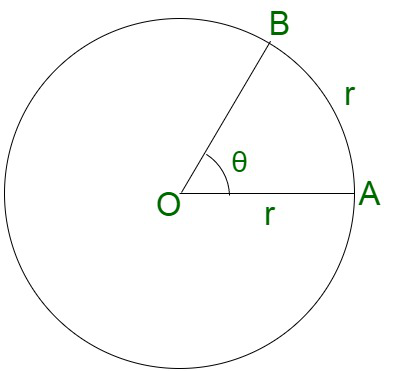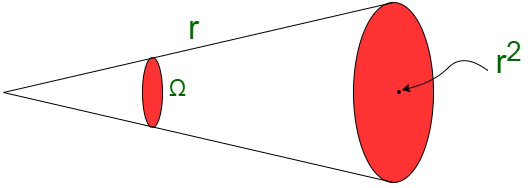Please Explain Length Measurement (Class 11 – Physics).
Measurement forms the fundamental principle to various other branches of science, that is, construction and engineering services. Measurement is defined as the action of associating numerical with their possible physical quantities and phenomena. Measurements find a role in everyday activities to aRead more
Measurement forms the fundamental principle to various other branches of science, that is, construction and engineering services. Measurement is defined as the action of associating numerical with their possible physical quantities and phenomena. Measurements find a role in everyday activities to a large extent. Therefore, it is necessary to study and explore the associated elements along with their theoretical foundations, conditions as well as limitations. It defines the units to be chosen for the measurement of various commodities. It also caters to the comparison of plausible units with the ones already existing of a similar kind.
Measurement defined the new standards as well as form transductions for the quantities which do not have any possible access for direct comparison. These physical quantities can be converted into analogous measurement signals.
Measurements may be made by unaided human senses, generally termed as estimates. It can also be estimated by the use of instruments, which may range in complexity from simple rules for measuring lengths to highly complex analogous systems to handle and design the commodities beyond the capabilities of the senses. Thus, the measurements may range from buying some quantity of milk (in L) or to the highly complex mechanisms, such as radio waves from a distant star or the nuclear bomb radiations. Therefore, we can consider that a measurement, always involves a transfer of energy or interaction between the object and the observer or observing instrument.

Measurement of Height of a person
Unit
The unit of a specified physical quantity can be considered as an arbitrarily chosen standard that can be used to estimate the quantities belonging to similar measurements. The units are well accepted and recognized by the people and well within all guidelines.
A physical quantity is measured in terms of the chosen standards of measurement.
The chosen standard is recognized as the unit of that corresponding physical quantity. A standard unit, in short, is a definite amount of a physical quantity. These standard units can be quickly reproduced to create a wide variety of units and are internationally accepted and accessible.
The measurement of any physical quantity is based on a formula, nu,
where, n = numerical value of the measure of the quantity,
u = unit of the quantity.
Standard
The actual physical embodiment of the unit of a physical quantity is termed as a standard of that physical quantity. The standard is expressed in terms of the numerical value (n) and the unit (μ).
Measurement of physical quantity = Numerical value × Unit
For example: Length of a rod = 12 m. Here 12 is its numerical segment and m (meter) is the unit.
Fundamental Units
Fundamental units are elementary in nature, that is, they can be expressed independently without any dependence on any other physical quantity. This implies that it is not possible to resolve it further in terms of any other physical quantity. It is also termed as a basic physical quantity. Fundamental quantities have their own values and units.
| Fundamental Quantities | Fundamental Units | Symbol |
| Length | meter | m |
| Mass | kilogram | kg |
| Time | second | s |
| Temperature | kelvin | k |
| Electric current | ampere | A |
| Luminous intensity | candela | cd |
| Amount of substance | mole | mol |
Supplementary Fundamental Units
There are two other supplementary fundamental units, namely Radian and steradian are two supplementary which measures plane angle and solid angle respectively.
| Supplementary Fundamental Quantities | Supplementary Unit |
| Plane angle | radian |
| Solid angle | steradian |
- Radian (rad)
One radian is equivalent to an angle subtended at the center of a circle by an arc of length equal to the radius of the circle. It is the unit represented for the plane angle.

θ = 1 radian
- Steradian (sr)
One steradian is equivalent to the solid angle subtended at the center of a sphere by its surface. Its area is equivalent to the square of the radius of the sphere.It is the unit represented for the solid angle. Solid angle in steradian,

Ω = 1 steradian
Properties of Fundamental Units
Any standard unit should have the following two properties:
- Invariability
The standard unit must be invariable. Thus, defining distance between the tip of the middle finger and the elbow as a unit of length is not invariable. - Availability
The standard unit should be easily made available for comparing with other quantities.
The seven fundamental units of S.I. have been defined as under.
- Meter (m)
Defined as 1650763.73 times the wavelength, in vacuum of the orange light emitted in transition from 2p10 to 5d5. - Kilogram (kg)
Defined as the mass of a platinum-iridium cylinder kept at Serves. - Second (s)
Time taken by 9192631770 cycles of the radiation from the hyperfine transition in cesium – 133 when unperturbed by external fields. - Ampere (A)
The constant current which, if maintained in each of two infinitely long, straight, parallel wires of negligible cross-section placed 1 m apart, in vacuum, produces between the wires a force of 2×10-7 newton per meter length of the wires. - Kelvin (K)
Temperature is measured with absolute zero as the zero and the triple point of water as the upper fixed point on the thermodynamic scale. The interval is divided into 273.15 divisions and each division is considered to be unit temperature. - Candela (cd)
The luminous intensity in the perpendicular direction of a surface ofsquare meter of a full radiator at the temperature of freezing platinum under a pressure of 101325 newtons per square meter.
- Mole (mol)
The mole is the amount of any substance which contains as many elementary entities as there are atoms in 0.012 kg of the carbon isotopeC.
Derived units
The derived units are in usage for the commodities where the units are obtained from a combination of fundamental units. Derived units are sometimes assigned names. For instance, the S.I unit of force is kg ms-2 , termed as Newton (N). The unit of power is kg m2 s-3 , termed as watt (W).
Steps to find Derived Units
- Fetch the formula for the quantity whose unit is to be derived.
- Substitute units of all the involved quantities. The chosen units should all belong to one system on units in their fundamental or standard form.
- Simplify for the derived unit of the quantity to compute its final unit.
Example: Compute the unit of velocity.
Since, we know velocity is a derived quantity, obtained from distance and time(fundamental quantities).
Mathematically ,
velocity = displacement/time
S.I. unit of velocity = = m/s
Thus S.I. unit of velocity is m/s.
Some Important derived units
Some of the derived units have been given specific names, depending on the increase in their usage , though they are not recognized in S.I units.
- Micron (mm) = 10-6 m
- Angstrom (Å) = 10-10 m
- Fermi (fm) = 10-15 m
- Barn (b) = 10-28 m2
Systems of Units
Any system of units contains the entire set of both fundamental as well as derived units, for all kinds of physical quantities. The preferred system of units are the following :
- CGS System (Centimeter Gram Second)
The unit of length is centimeter, the unit of mass is gram and the unit of time is second according to the guidelines of this system. - FPS System (Foot Pound Second)
The unit of length is foot, the unit of mass is pound and the unit of time is second according to the guidelines of this system. - MKS System (Meter Kilogram Second)
The unit of length is meter, the unit of mass is kilogram and the unit of time is second according to the guidelines of this system. - SI System
The System Internationale d’ Units, that is S.I system contains seven fundamental units and two supplementary fundamental units.
Note:
While computation of values for any physical quantity, the units for the involved derived quantities are treated as algebraic quantities till the desired units are obtained.
Advantages of S.I Unit System
The S.I unit of measurement is preferred over other units of measurement, because,
- It is internationally accepted.
- It is a metric system.
- It is a rational and coherent unit system,
- Easy conversion between CGS and MKS systems of units.
- Uses decimal system, which is easy to understand and apply.
Other Important Units of Length
The distances can be infinitely larger in magnitude, which cannot be depicted in terms of meters or kilometers. For instance, the distances of planets and stars etc. Therefore, it is necessary to use some larger units of length such as ‘astronomical unit’, ‘light year’, parsec’ etc. while making such calculations, some of which are :
- Astronomical Unit – The average separation between the Earth and the sun.
1 AU = 1.496 x 1011 m. - Light Year – The distance travelled by light in vacuum in one year.
1 light year = 9.46 x 1015 m. - Parsec – The distance at which an arc of length of one astronomical unit subtends an angle of one second at a point.
1 parsec = 3.08 x 1016 m - Fermi – Size of a nucleus is expressed in ‘fermi’.
1 fermi = If = 10-15 m - Angstrom – Size of a tiny atom
1 angstrom = 1A = 10-10 m
Sample Problems
Problem 1. Convert the unit of G, which is gravitational constant, G = 6.67 x 10-11Nm2/kg2 in CGS system.
Solution:
Since, we have
G = 6.67 x 10-11 Nm2/kg2
Converting kg into grams, 1 kg = 1000 gms
= 6.67 x 10-11 x 108 x 103 cm3/g1 s2
= 6.67 x 108 cm3/g1 s2
Problem 2. Name the S.I units of the following commodities :
a. Pressure
b. Solid angle
c. Luminous intensity.
Solution:
a. Pascal
b. Steradian
c. Candela
Problem 3. Derive the S.I unit of latent heat.
Solution:
Latent heat =
Problem 4: How are A0 and A.U related?
Solution:
Describing both quantities in terms of meters,
Ao = 10-10m
and 1 A.U. = 1.4961011m.
Therefore,
1 A.U. = 1.496 x 1011 x 1010 A0
1 A.U = 1.496 x 1021 A0
Problem 5: Describe 1 light-year in meters.
Solution:
See lessA light-year is a distance travelled by light in 1 year with the speed of light :
= 9.46 x 1011 m

 Formula for Gravitational Force,
Formula for Gravitational Force,

 Strong Nuclear Force
Strong Nuclear Force

Previously, length was measured using units such as the length of a foot, the breadth of a palm, and so on. The ‘Cubit’ was one of the first means of measuring length. It is the length of the arm from the elbow to the tip of the fingers. These units vary from person to person, resulting in non-unifoRead more
Previously, length was measured using units such as the length of a foot, the breadth of a palm, and so on. The ‘Cubit’ was one of the first means of measuring length. It is the length of the arm from the elbow to the tip of the fingers. These units vary from person to person, resulting in non-uniform measures.
How can we know how far the moon is from the earth or how far the moon is from the sun? How did we determine the earth’s diameter? Measuring length isn’t always simple or easy. We’ll try to respond to these queries in the sections below. In addition, we will learn about the many methods for measuring length.
Length
In other terms, it is the largest of the two or the highest of three geometrical form or item dimensions. The width and length of a rectangle, for instance, are its dimensions. Furthermore, under the International System of Quantities, length is a quantity with the dimension distance.
The meter, abbreviated as m, is the basic unit for length in the International System of Units (SI). The length or distance is measured in kilometers (km), meters (m), decimeters (dm), centimeters (cm), and millimeters (mm) in the metric system (mm). It is possible to convert quantities from meters to centimeters, kilometers to meters, centimeters to millimeters, and so on.
Measurement of Length
There were no modes of transportation available in ancient times. People used to travel on foot or by using animals to transport goods. Over time, the term “wheel” was coined. This signified a significant shift in human forms of transportation. Since then, new forms of transportation have been invented and improved regularly. The steam engine was created, and it had a great influence and was instrumental in shaping the world as we know it today.
As a result, transportation has a lengthy history. Did the folks have any idea how far they had to go? To go to any location, one must first determine how far away it is. This aids in deciding whether to walk, take the train, bus, or fly to that location. To determine how far apart two locations are, we must first determine the distance between them. But what exactly does measurement imply? What is the best way to measure a physical quantity? The comparing of an unknown amount to a known amount is known as measurement. A numerical number known as “magnitude” and a “unit” are used to indicate the outcome of the measurement. A ‘unit’ is a pre-determined unit of comparison against which other physical quantities are measured.
The length of the foot, the breadth of the palm, and other such quantities were used to measure the length in the past. The ‘Cubit’ was one of the first means of measuring length. It is the length of an arm measured from elbow to tips of fingers. These units varied from person to person, resulting in non-uniform measures. A set of standard units of measurement has been recognised all around the world to preserve uniformity in measurements.
Conventional Methods of Measurements
Historically, the human body served as the foundation for length units.
A foot is 12 inches long, and a yard is three feet long. It was simple to describe how distant the next village was and to determine if an object would fit through a doorway using these dimensions. These dimensions also made it easier for individuals to swap garments and wood.
Scale
Triangulation Method
Let’s take a closer look at what the triangulation approach entails. How might triangulation assist us in determining the distances between distant stars? The parallax approach makes use of the fact that a triangle may be entirely defined using only three parts. Triangulation is the process of determining the values of a triangle to determine an item’s position. Surveyors and architects frequently employ such techniques.
Triangulation Example
Let’s put this into practice with a real-life scenario. How can we estimate a large object distance from any distance without actually measuring it? It may be measured using the triangulation method.
Triangulation Method of measurement
Parallax Method
The two places of vision each have their own line of sight, and parallax is defined as half the angle between them. When you’re driving in a car and glance about, you’ll notice that items far away appear to move more slowly than items closer to you. This is the parallax effect. Because the parallax of nearby objects is greater than that of distant ones, the parallax may be utilised to measure distances.
When the phenomena of parallax is coupled with triangulation, the position of the item may be determined with great precision. The parallax method is commonly used by astronomers to determine the distances between stars.
Distance Measurement by Parallax Method
The principle of triangulation is used to the measuring of distance through parallax. We learned from triangulation that a triangle may be completely specified if two angles and sides are known.
The distance of a faraway star is being computed in the image below. The star closer to Earth than the farthest one gives the limited parallax value. By observing the star from two known places on Earth that form the triangle’s baseline, we may determine the value of the parallax angle.
Parallax Method
Let’s denote the parallax half-angle between two places on Earth ‘p.’ The radius of the Earth is the greatest value of ‘d,’ and the distance of the star may be considered to be just slightly more than that of the sun. Because the distance from the sun is several orders of magnitude lower than the radius of the Earth, the parallax angle we obtain is exceedingly modest.
Application
The distance to an object measured in parsecs (in terms of light speed) is equal to the reciprocal of parallax angle measured in arcseconds.
Relation between the distance of a star, and its parallax is given as:
To solve the difficulty of tiny ratios, the parallax of a star is most commonly estimated using yearly parallax, which is defined as the difference in a star’s location as seen from the Earth and the Sun. Instead of using the Earth’s radius as a fixed baseline, the radius of the Earth’s revolution around the Sun is used, which increases the size of the baseline and hence the top angle, making it simpler to measure.
However, for any celestial objects near to the Earth, we can consider the diameter of the Earth as a baseline, and the distance of any celestial objects is given as:
Sample Problems
Problem 1: If a person covers 1.5 yards in one step, how much distance will he cover in 30 steps?
Solution:
Problem 2: Astronomers apply which method to determine how far away a star is?
Answer:
Problem 3: What is parallax?
Answer:
Problem 4: What was the conventional method of measuring the length?
Answer:
Problem 5: The Moon subtends an angle of 1° 55’ at the baseline equal to the diameter of the Earth. What is the distance of the Moon from the Earth? (Radius of the Earth is 6.4 × 106 m)
Solution:
See less